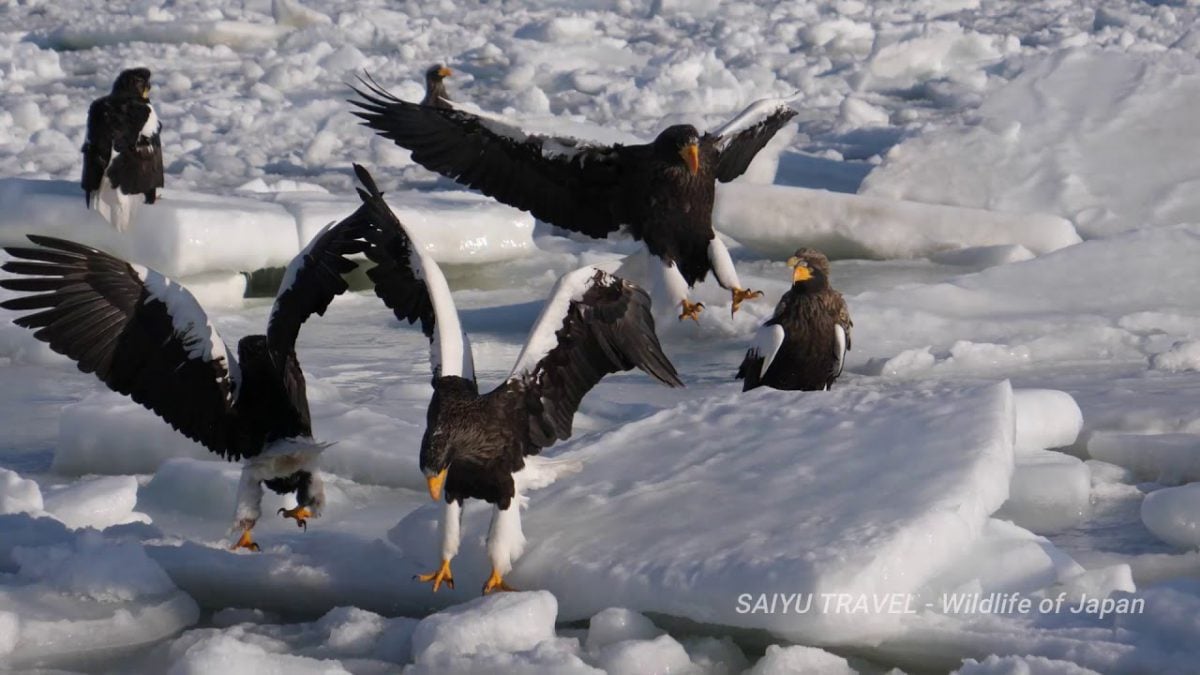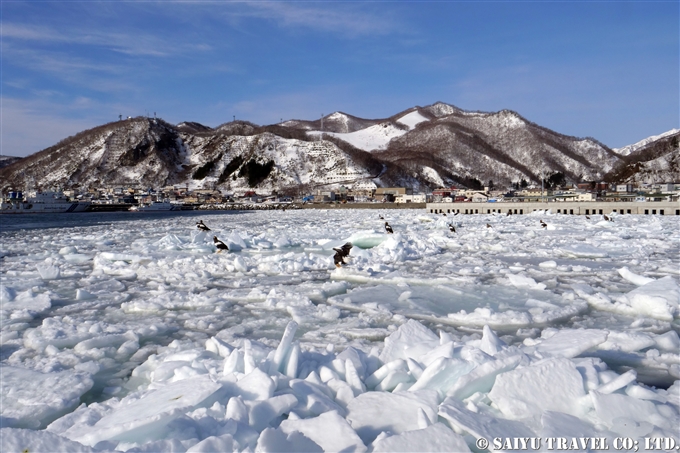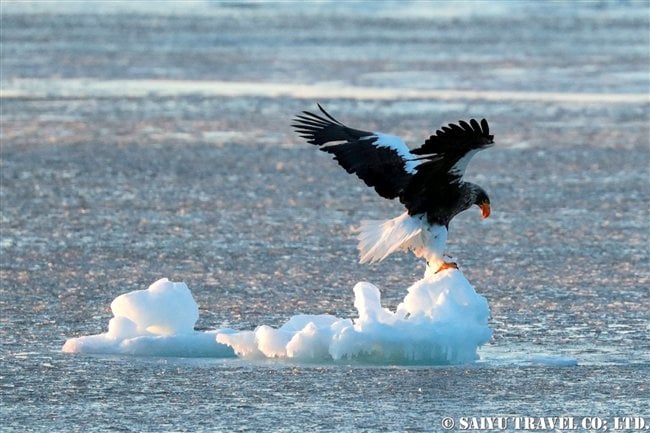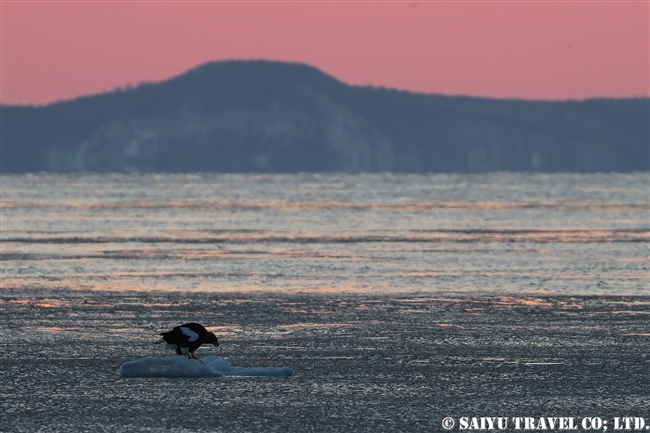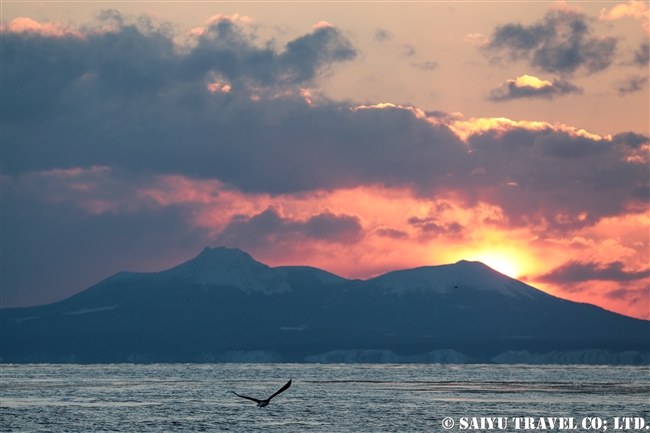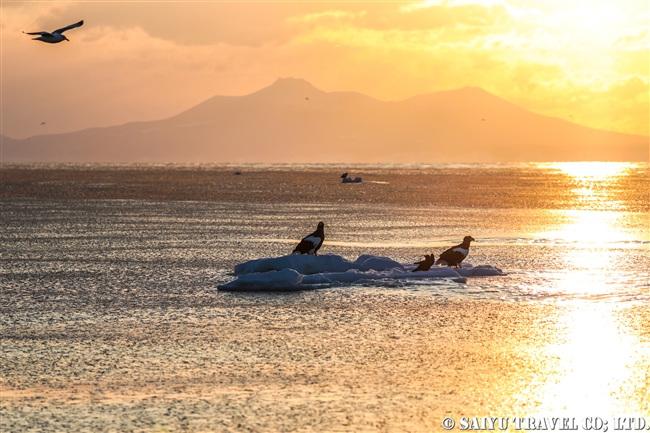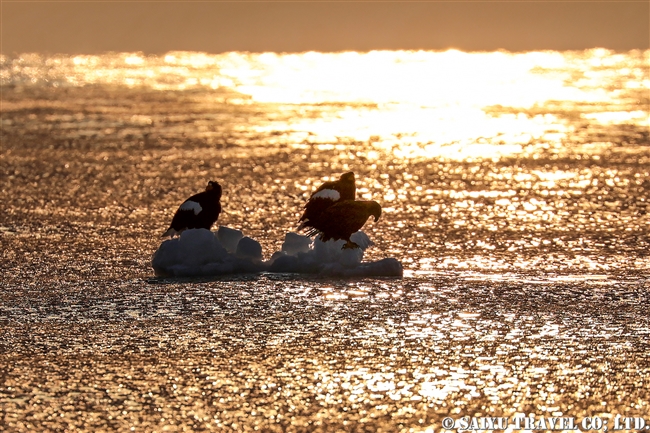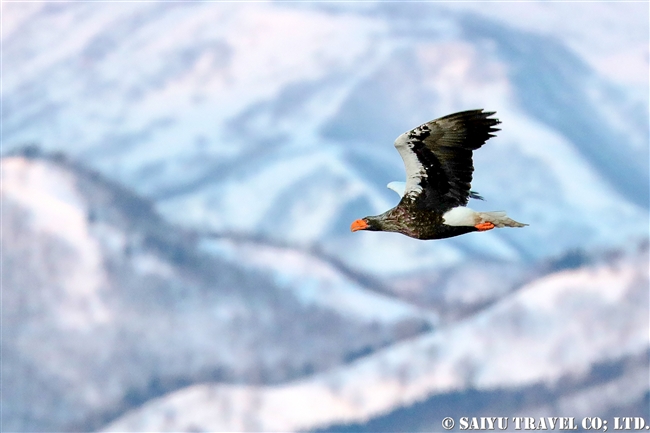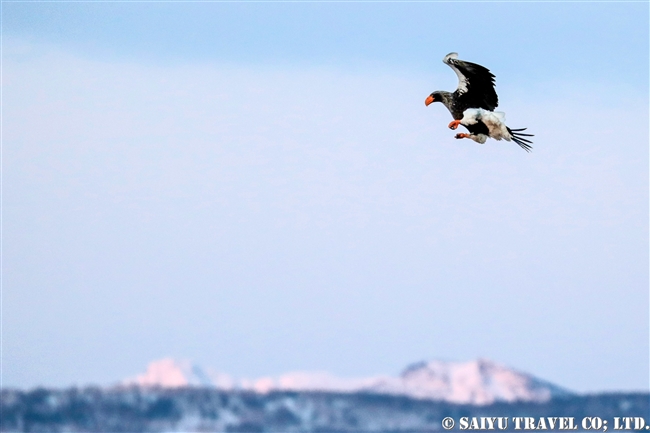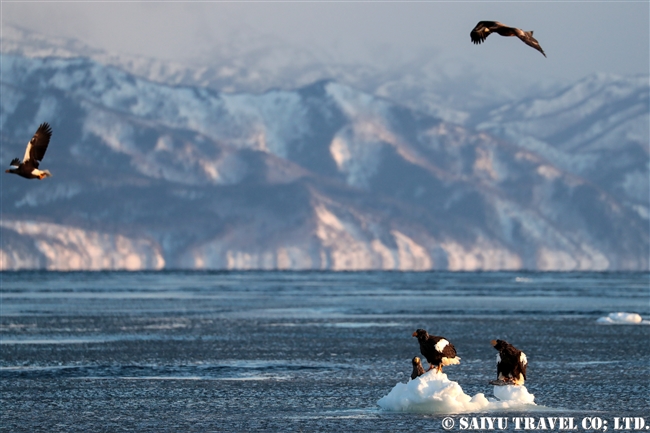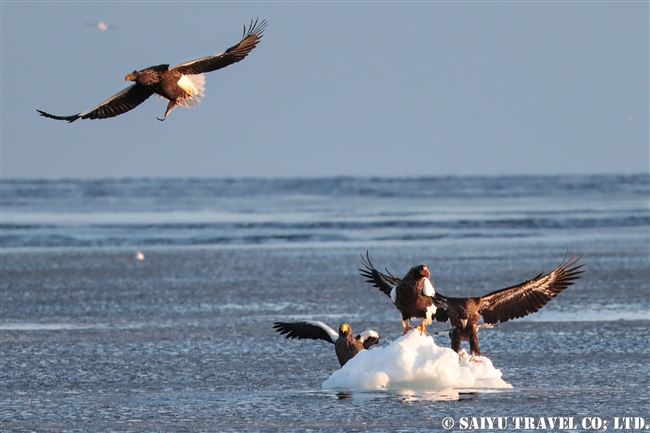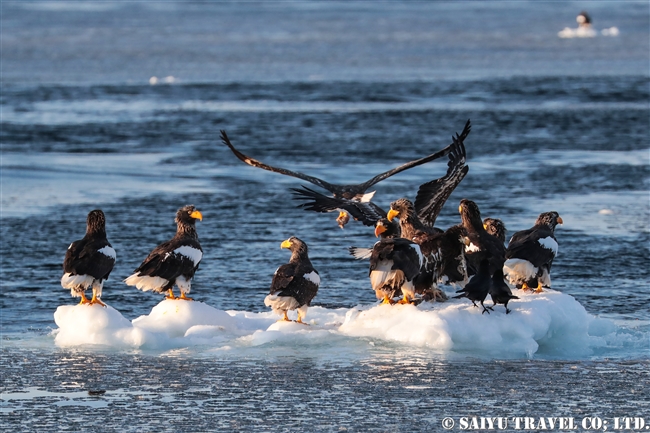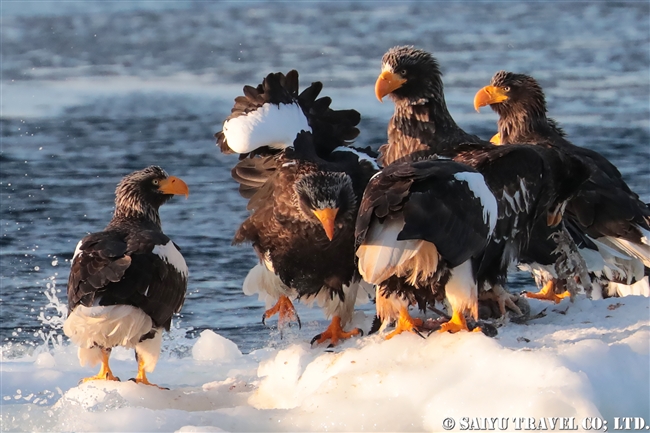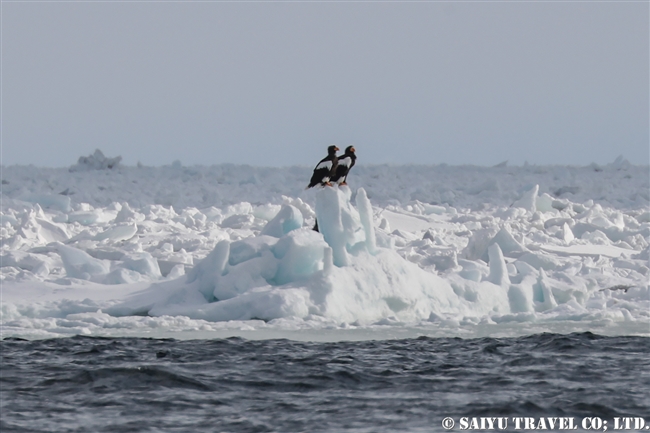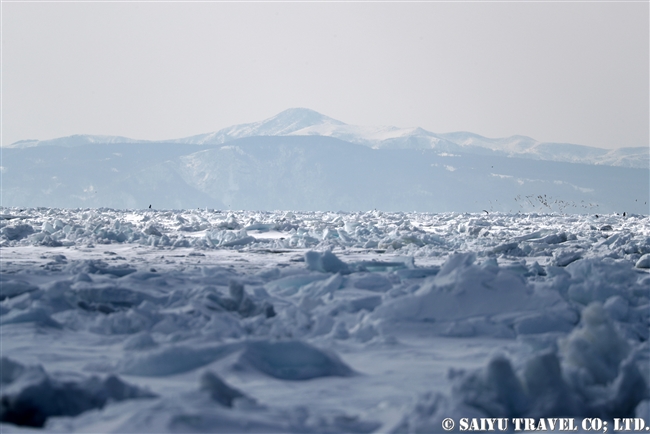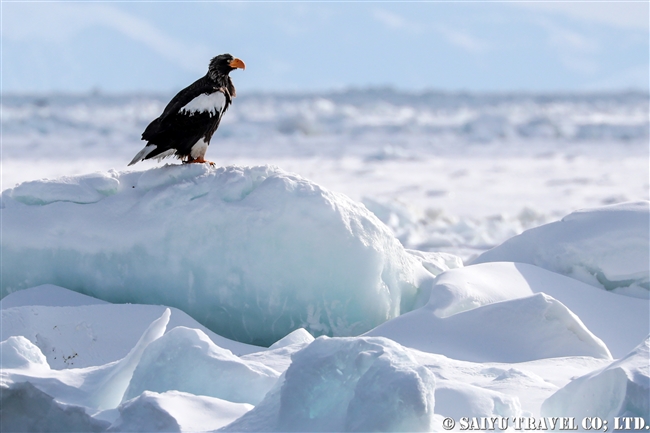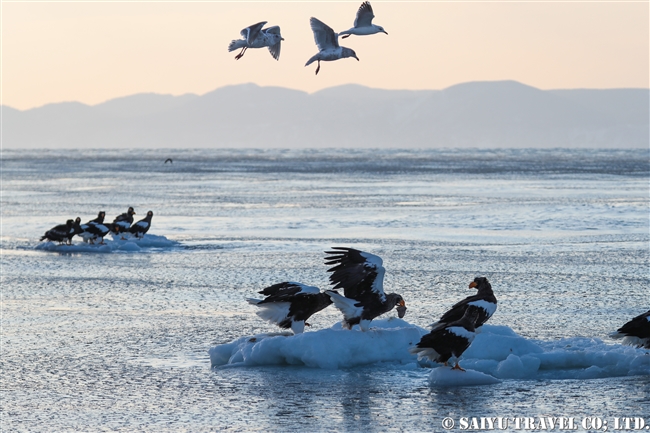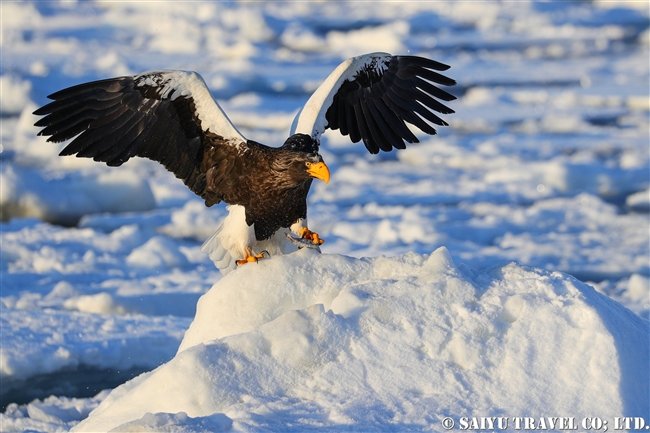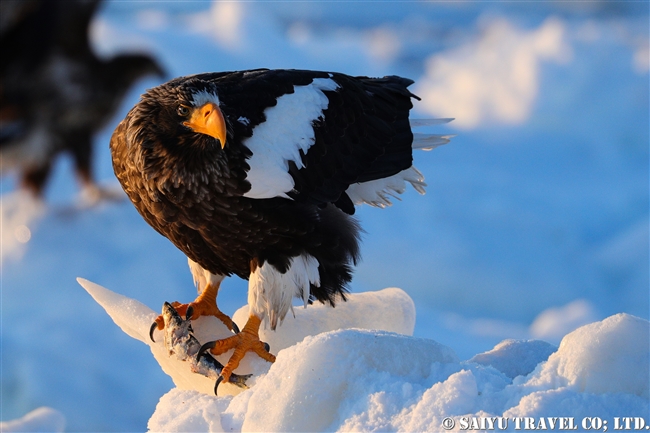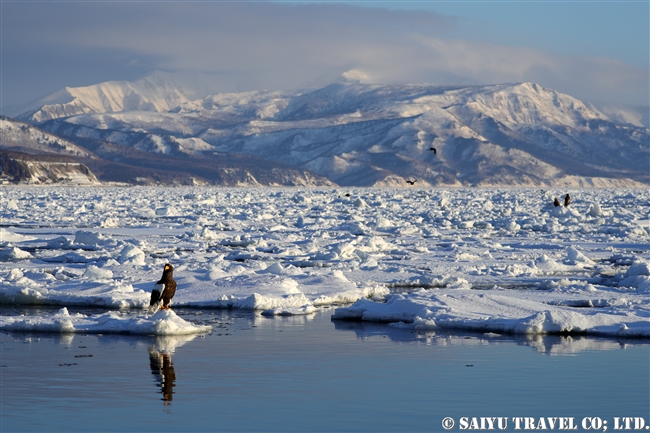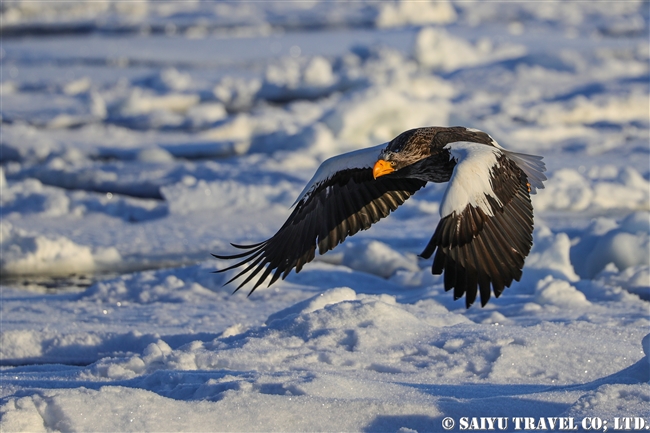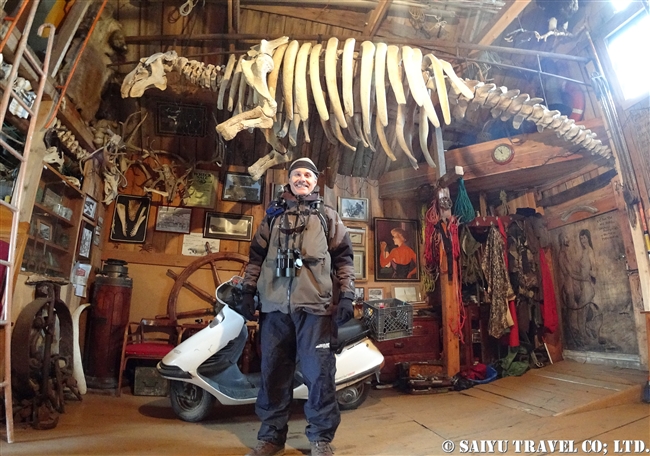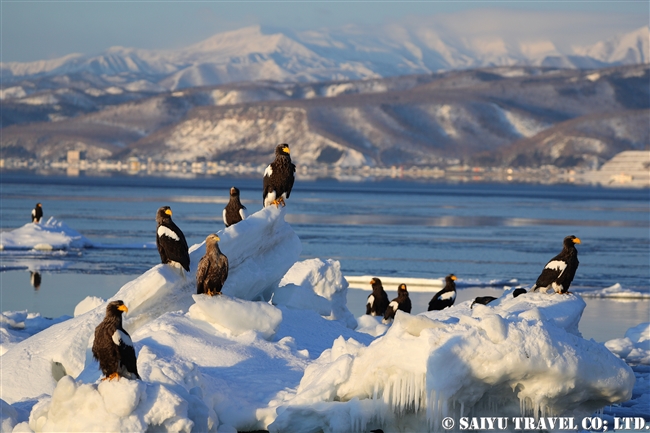
>For information and tours of Teuri Island, click here!
In early July of 2021, the “Teuri Island Seabird Class” was led by nature photographer, Takaki Terasawa, who lives on Teuri Island. The tour was 4 days and 3 nights, with a full syllabus, to learn about the seabirds, take pictures of them, and learn more about the environmental issues they face, and to just enjoy seeing the Island itself.
Rhinoceros Auklets on the Rocky Cliffs: Teuri Island
Homecoming of the Rhinoceros Auklet (Teuri Island – Hokkaido)
Spectacled Guillemot at Terui Island / Akaiwa Observatory
Ocean Sunset at Terui Island, with the Spectacled Guillemot and Rhinoceros Auklet
During the stay, on a clam morning, Mr. Terasawa captained the ship named “Keimafuri-Gou” for our seabird observation cruise. (Keimafuri is the Japanese name for the Spectacled Guillemot.) During this season, daybreak was at 4am, so by the time we left the dock at 6am, it was already bright out. As we pulled out from Maehama Fishing Port, we could see the Rhinoceros Auklets floating around us in the water here and there. We headed out towards the direction of Akaiwa (Red Rock.)

As we neared Akaiwa (Red Rock) I could see the Spectacled Guillemots flying! They are a seabird that only breeds on the coasts of the Sea of Okhotsk, on the Kamchatka Peninsula, and in Japan, they are only found in Aomori Prefecture and Hokkaido. So it is so rare to see them in the world and even more rare to be able to see their breeding grounds.

Just around Akaiwa (Red Rock) and Byobuiwa (Folding Screen Rock) there were so many Spectacled Guillemots. Their appearance makes the name pretty easy to understand, as their wonderful eye rings makes them look as if they are “wearing glasses.” Some of the Kuril Island’s Pigeon Guillemots with their white eyes where worriedly looking at our boat “Is that the Keimafuri?” But the thick white-ringed eyes of the Spectacled Guillemots were really superb.

The Spectacled Guillemots that were sitting on the rocks. According to Mr. Terasawa, these rocky areas are very significant areas for these seabirds. There have been various behaviors while observing them here, as well as even seeing birds mate on this rocky outcrop.

I could also hear the loud calls of the Spectacled Guillemots from the rocks. It feels like I could just watch them forever, as they are engaged in their conversations out there.

Over here also, it’s as if the other birds are watching these two birds at the top converse.

This is a splendid pair. The breast feathers of the bird on the right are unique.

Then, as if it is timed, they all take off in unison. The red legs of the Guillemots are kicking at the surface of the water as they take flight.

Captain Terasawa’s vessel “Keimafuri-Gou” is a small 6-seater. Getting that eye-level view, is possible only on the Keimafuri-Gou! And the name of the boat on the side, was beautifully hand-painted by Mr. Terasawa himself!

This is a bottle of Junmai Sake sold at “Umi no Uchukan” (Teuri Visitor Center) is named after the Spectacled Guillemots as well. The “Keimafuri” sake is 100% made from Hokkaido grown rice in Asahikawa by farmer Takasago Shuzo. And the Guillemot pair on the label is a drawing made by illustrator Hiroshi Abe. It is a very nice label.
After seeing the wild birds in the morning, we enjoyed the evening with sea urchin caught locally and some delicious Keimafuri Sake at night…

To close the trip, we had a tasty local flavor of “Teuri’s Barbecue.” This is the peak season for the harvest of purple sea urchins! By the way, the meat in the background is “the phantom Suffolk lamb” from nearby Yagishiri Island. I could receive the “fortunes” of Yagishiri Island also!
Photo & text: Mariko SAWADA
Observation: July 2021, Teuri island, Hokkaido
★ Visit our web site of TEURI ISLAND.
★Contact us to make arrangements for photographing seabirds on Teuri Island and Wildlife of Japan.
★Wildlife videos are also available on Youtube – we have the playlist as well.
Tags: Bird tour Japan, Birds of Japan, Bird Watching Japan, Wildlife Photography tour in Japan, Wildlife in Japan, Wildlife tour in Japan, Wildlife in Hokkaido, Birds Photography of Japan, Teuri, 天売島, Teuri Island, ケイマフリ, Akaiwa Observatory, Keimafuri, Keimafuri gou, Spectacled Guillemot, Birding tour Japan, Wildlife of Japan






















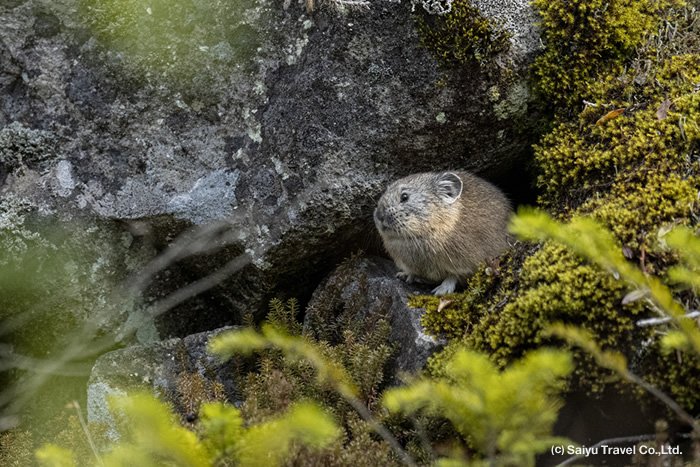
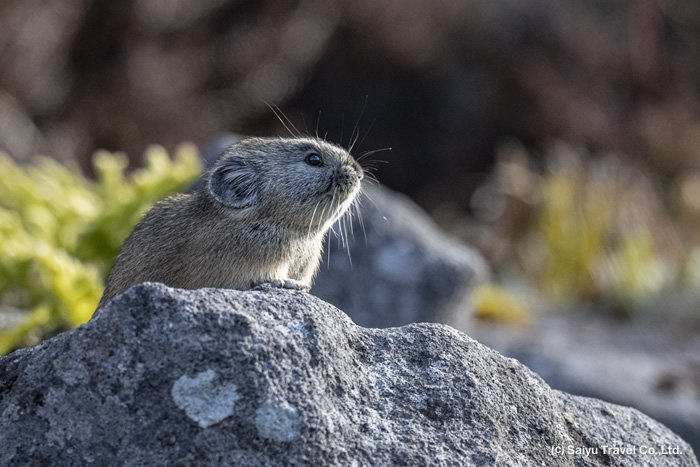






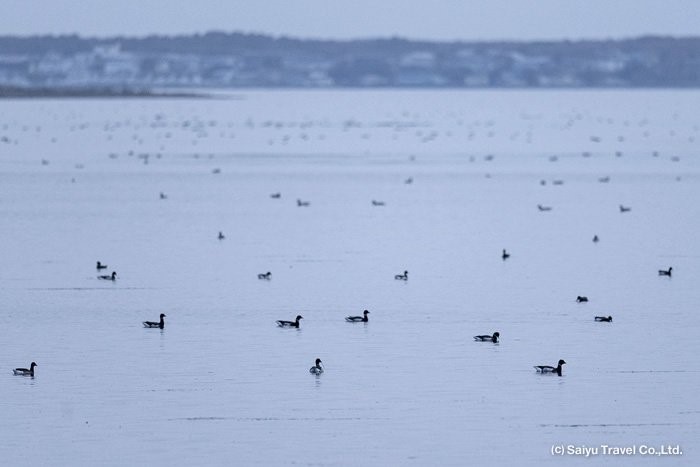
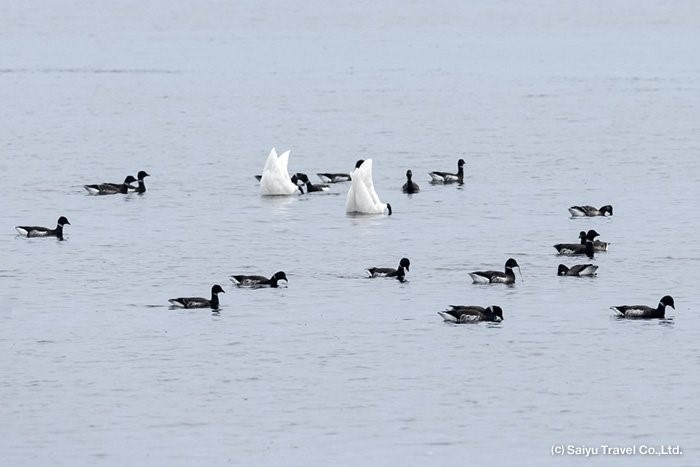
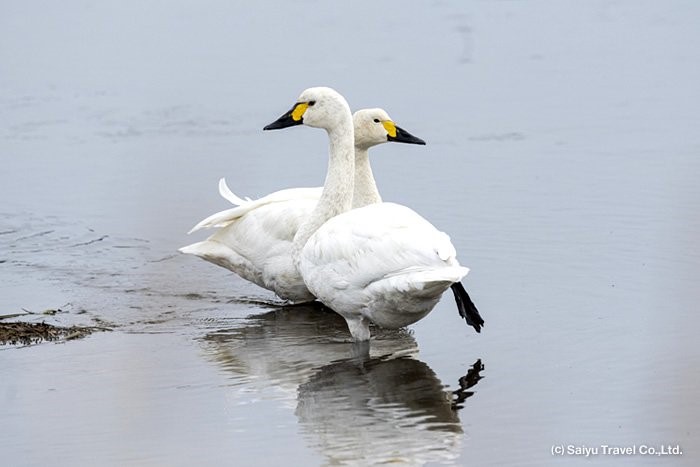
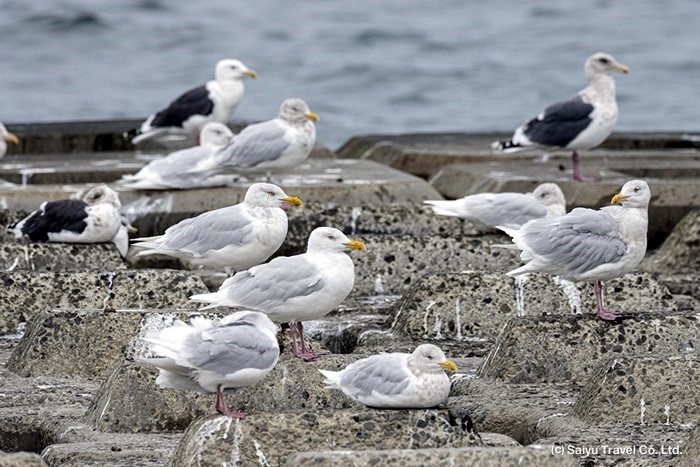
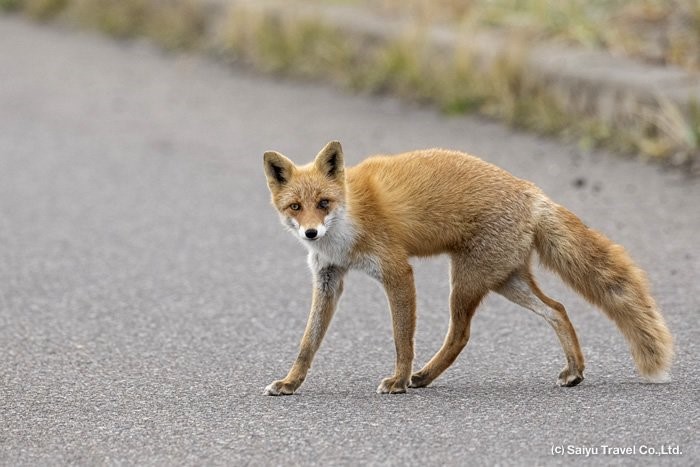
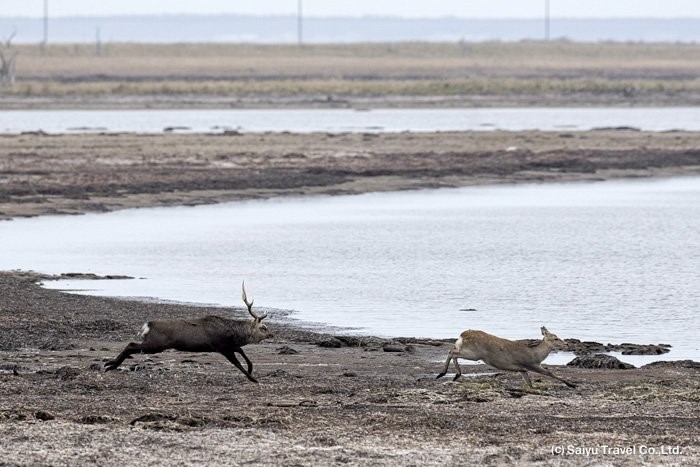
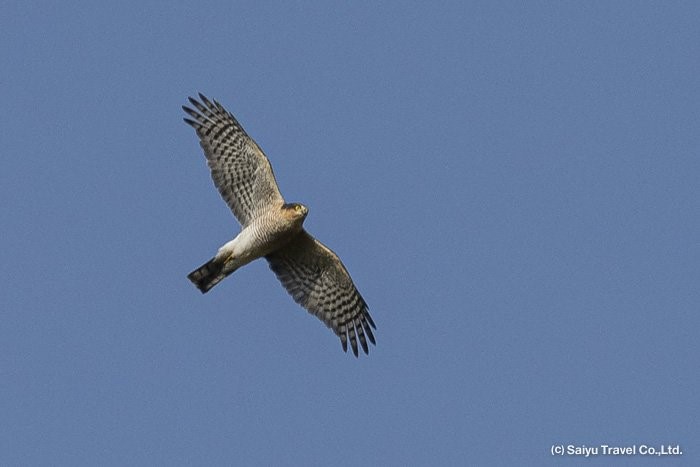
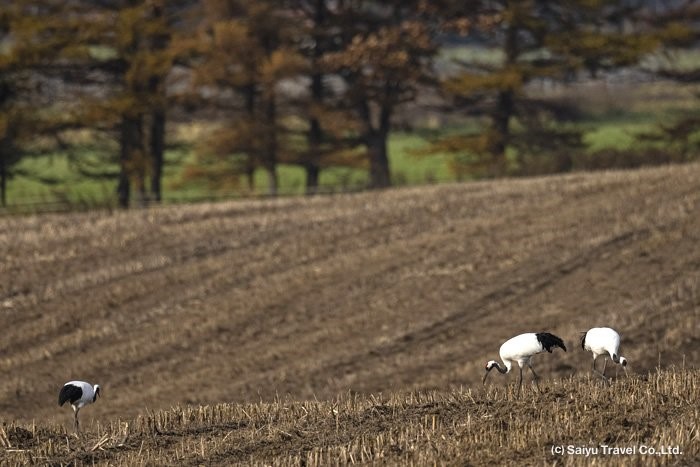
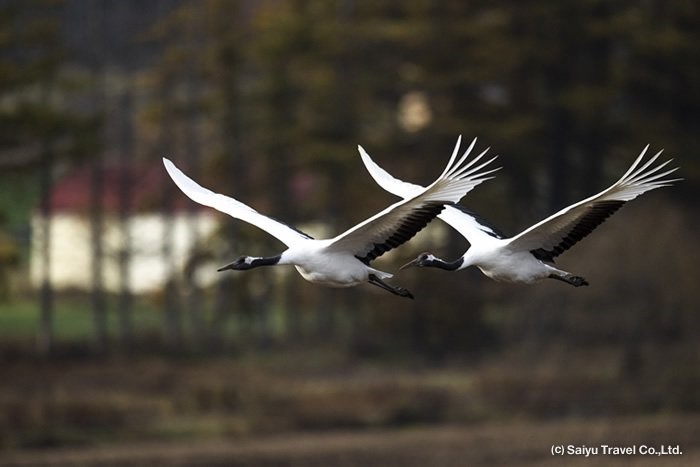
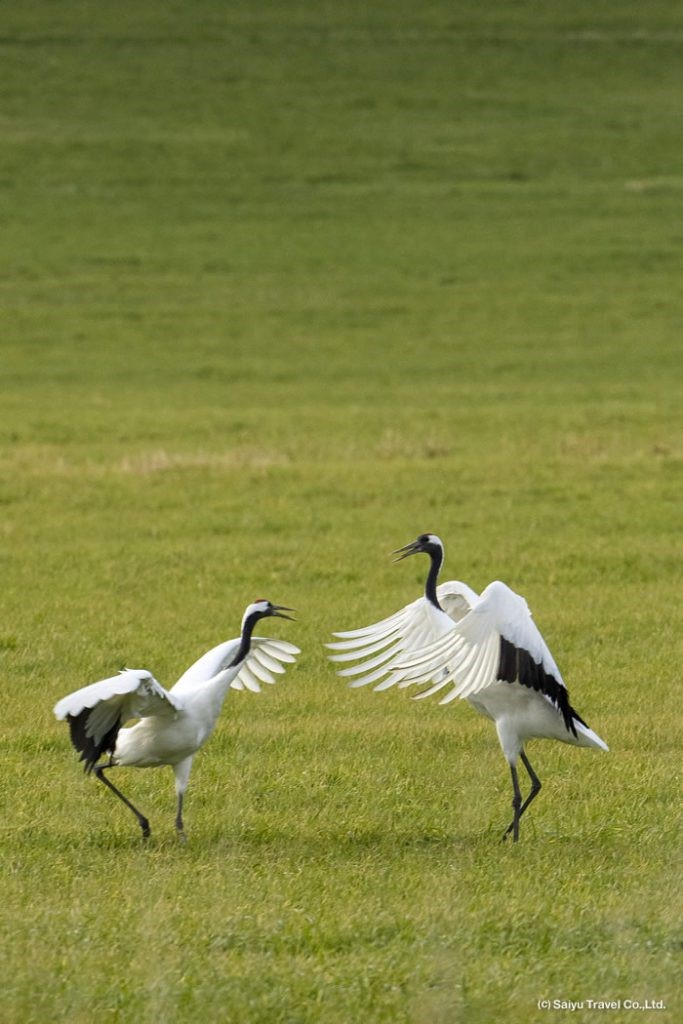

.jpg)








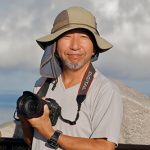 Born in Aichi Prefecture in 1966 and currently resides there. Became interested in photography when he was a junior in high school. He has been taking photographs mainly of natural scenery and wildlife, which he has loved since he was a child. Currently, rather than taking “pretty, cute, and cool” photos, he focuses on taking photos of scenes that have a human touch and environmental scenes that show the relationship with human life. Ultimately, he aims for “photographs that have a smell. His work has been published in photo collections and exhibitions, and used in magazines, illustrated books, and calendars. His photographic collections include “Raicho Korokoro” and others.
Born in Aichi Prefecture in 1966 and currently resides there. Became interested in photography when he was a junior in high school. He has been taking photographs mainly of natural scenery and wildlife, which he has loved since he was a child. Currently, rather than taking “pretty, cute, and cool” photos, he focuses on taking photos of scenes that have a human touch and environmental scenes that show the relationship with human life. Ultimately, he aims for “photographs that have a smell. His work has been published in photo collections and exhibitions, and used in magazines, illustrated books, and calendars. His photographic collections include “Raicho Korokoro” and others.









